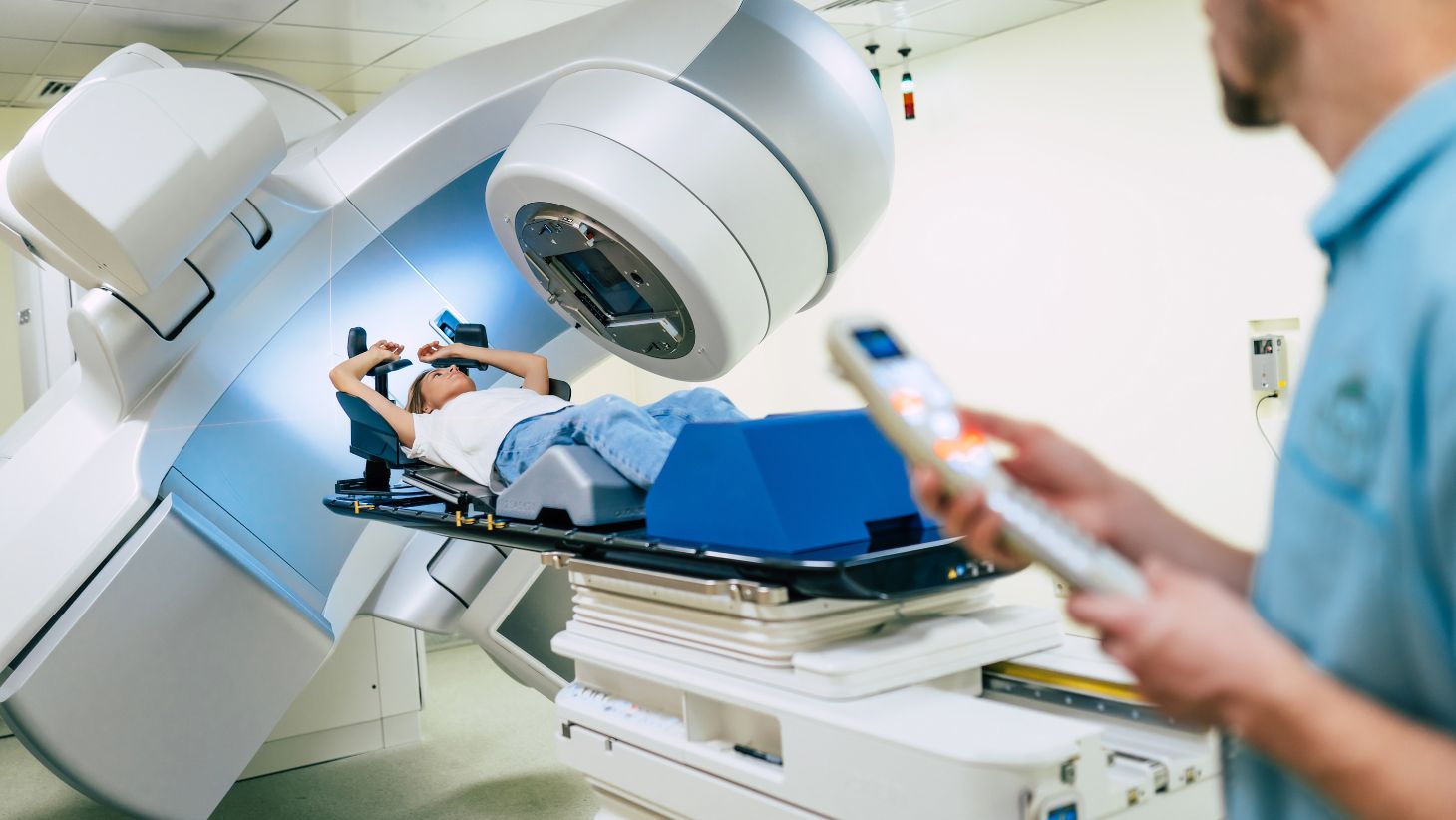What are the benefits of radiation therapy?
Radiation therapy is a widely used cancer treatment that uses high-energy radiation to target and kill cancer cells. It offers several key benefits in both cancer treatment and management of other medical conditions. Here are the main benefits:
1. Effective Cancer Treatment
- Kills Cancer Cells: Radiation damages the DNA of cancer cells, which prevents them from growing, dividing, and spreading. This makes it highly effective for localized tumors.
- Targets Specific Areas: It can be precisely directed to the tumor, minimizing damage to surrounding healthy tissues.
2. Shrinking Tumors
- Radiation therapy can shrink tumors before surgery (known as neoadjuvant therapy), making them easier to remove or treat.
- It can also be used after surgery (known as adjuvant therapy) to eliminate any remaining cancer cells.
3. Relief of Symptoms
- In cases of advanced or metastatic cancer, radiation therapy can be used for palliative care to reduce pain, bleeding, or other symptoms caused by tumors pressing on nerves, bones, or organs.
4. Combining with Other Treatments
- Radiation therapy is often used in conjunction with other treatments such as chemotherapy, immunotherapy, or surgery to enhance the overall effectiveness of treatment.
5. Non-invasive Option
- Radiation therapy is a non-invasive treatment, unlike surgery, which makes it a good option for patients who may not be candidates for surgical procedures due to health concerns or the location of the tumor.
6. Treatment for Non-cancerous Conditions
- Radiation can also be used to treat non-cancerous conditions like:
- Benign tumors
- Certain thyroid disorders
- Keloids (scar tissue overgrowth)
- Certain neurological disorders, such as trigeminal neuralgia
7. High Success Rate for Certain Cancers
- For some types of cancer, like early-stage breast cancer, prostate cancer, or head and neck cancers, radiation therapy offers a high cure rate, especially when combined with other treatments.
8. Improved Quality of Life
- In advanced cancer cases, radiation can significantly improve quality of life by alleviating pain, reducing the size of tumors, and allowing patients to maintain functionality.
The success and benefits of radiation therapy depend on factors like the type of cancer, its stage, location, and the overall health of the patient.
What are the risks of radiation therapy?
While radiation therapy is an effective treatment for many types of cancer, it does come with certain risks and side effects. These can vary depending on the area being treated, the dose of radiation, and the individual’s overall health. Below are the common risks and potential side effects:
1. Damage to Healthy Tissue
- Healthy cells surrounding the targeted area can be damaged by radiation, which may lead to side effects like inflammation or scarring of tissues.
- Long-term damage to organs near the treated area (e.g., lungs, heart, kidneys) can occur, depending on the location of radiation therapy.
2. Skin Reactions
- Radiation dermatitis: The skin in the treated area can become red, irritated, or peel, similar to a sunburn.
- Skin can also become dry, itchy, and sensitive. In some cases, long-term changes like darkening or thickening of the skin may occur.
3. Fatigue
- Fatigue is a common side effect, often increasing as treatment progresses. It can last for several weeks or months after treatment ends.
4. Risk of Secondary Cancer
- Exposure to radiation slightly increases the risk of developing a secondary cancer (new cancer) in the treated area, usually many years later. This is a rare but known risk.
5. Specific Organ-related Side Effects
- Depending on the part of the body being treated, radiation therapy can cause side effects in nearby organs:
- Head/Neck area: Dry mouth, difficulty swallowing, changes in taste, hair loss, or dental problems.
- Chest area: Cough, difficulty breathing, heart problems, or inflammation of the lungs (pneumonitis).
- Abdomen/pelvis: Nausea, diarrhea, bladder irritation, or fertility issues in both men and women.
- Brain/spinal cord: Cognitive changes, memory loss, or neurological symptoms if radiation is directed at the central nervous system.
6. Fertility Issues
- Radiation therapy to the pelvis or reproductive organs can affect fertility in both men and women, leading to temporary or permanent infertility.
7. Nausea and Vomiting
- Radiation therapy to the abdomen or pelvis can cause nausea, vomiting, or loss of appetite, particularly if the digestive organs are involved.
8. Hair Loss
- Localized hair loss can occur in the area receiving radiation, but unlike chemotherapy, it typically only affects the specific site being treated.
9. Scarring or Fibrosis
- In some cases, radiation can cause long-term scarring or fibrosis (thickening of tissues), which may affect the function of the organ or tissues involved.
10. Lymphedema
- Radiation therapy can sometimes damage the lymphatic system, leading to lymphedema (swelling due to fluid buildup), particularly in areas like the arms or legs if the lymph nodes are treated.
11. Changes in Blood Counts
- Radiation can affect blood cell production, particularly if large areas of the body or the bones (where blood cells are produced) are treated. This can lead to anemia, low white blood cell counts, or low platelet counts, increasing the risk of infections or bleeding.
12. Emotional and Psychological Effects
- Undergoing radiation therapy can be emotionally and psychologically stressful, leading to anxiety, depression, or feelings of isolation for some patients.
Long-term Risks:
- Some side effects of radiation therapy may not appear until months or years after treatment. These can include chronic pain, scar tissue formation, or long-term damage to organs or bones.
Summary:
While radiation therapy can be highly effective, it is important for patients to work closely with their healthcare team to manage any side effects and minimize risks. The benefits of treatment are often weighed carefully against these potential risks.

Leave a Reply
You must be logged in to post a comment.